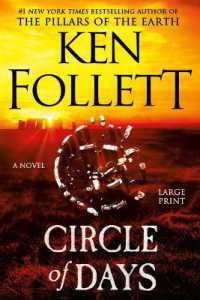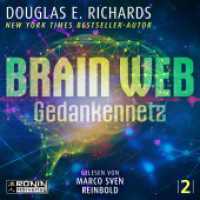- ホーム
- > 洋書
- > 英文書
- > Science / Mathematics
Full Description
Equips engineers, researchers, and students with the necessary tools to develop innovative and efficient electromechanical systems.
Electric machines are at the heart of modern energy systems, powering everything from industrial automation to electric transportation. Electromagnetic Analysis of Electric Machines provides a rigorous and analytical foundation for understanding the operation of motors, generators, and actuators through first principles. Written by leading experts with decades of teaching and research experience, the book explores the electromagnetic theory underlying electric machinery.
The authors present a structured exploration of key concepts, beginning with fundamental electromagnetic principles before advancing into steady-state and dynamic models of electric machines. Rather than focusing primarily on descriptive methods, this unique textbook emphasizes analytical techniques and mathematical formulations to develop deeper intuition about machine behavior. In-depth chapters cover all major types of electric machines—commutator, synchronous, induction, and reluctance—and integrate modern advancements in materials, power electronics, and control techniques.
Serving as both an academic textbook and a reference for engineers, Electromagnetic Analysis of Electric Machines:
Provides a thorough, first-principles approach to electric machine analysis, bridging theory and real-world applications
Develops analytical techniques to enhance understanding of electromagnetic behavior in motors and generators
Utilizes conservation-of-energy, field-based, and continuum-based methods for force and loss calculations
Includes mathematical formulations and problem-solving approaches for advanced electromechanical systems
Explores practical applications in robotics, transportation, industrial automation, and emerging energy systems
Electromagnetic Analysis of Electric Machines is ideal for graduate students, researchers, and professionals in electrical engineering, particularly those focusing on electric machines, power electronics, and electromechanical systems. Suitable for courses in electric machine analysis, electromechanical energy conversion, and advanced motor design, it supports degree programs in electrical and mechanical engineering.
Contents
Forward
1 Motors, Generators and Electromechanics
2 Circuits and Field Analysis
3 Electromagnetic Fields, Forces and Energy Flow
4 Design Synthesis, Optimization and Modeling
5 Synchronous and Brushless DC Machines
6 Classical Winding Analysis
7 Synchronous Machine Dynamic Models
8 DC (Commutator) Machines
9 Induction Machines
10 Switched Reluctance Motors
11 Power electronics drives
12 Basics of machine control








